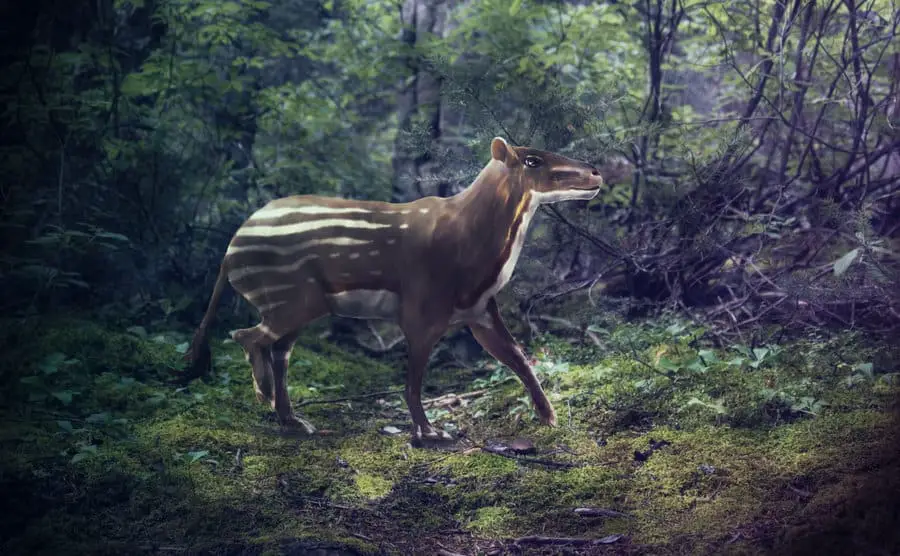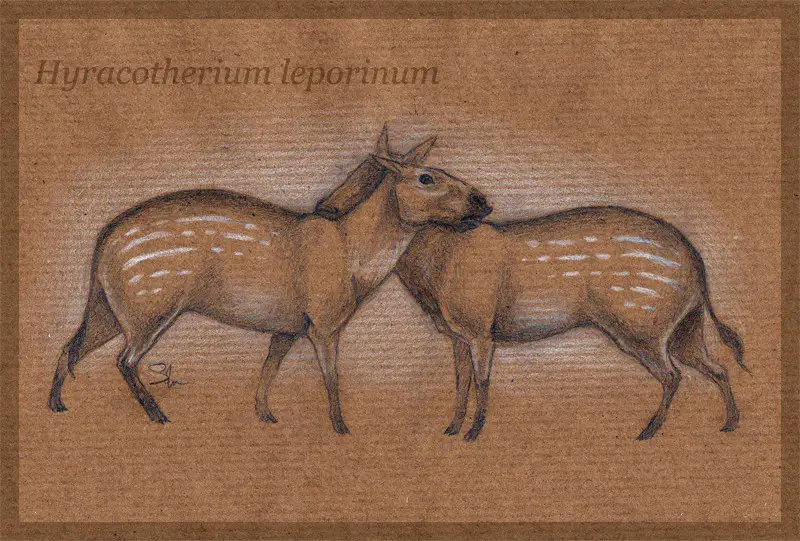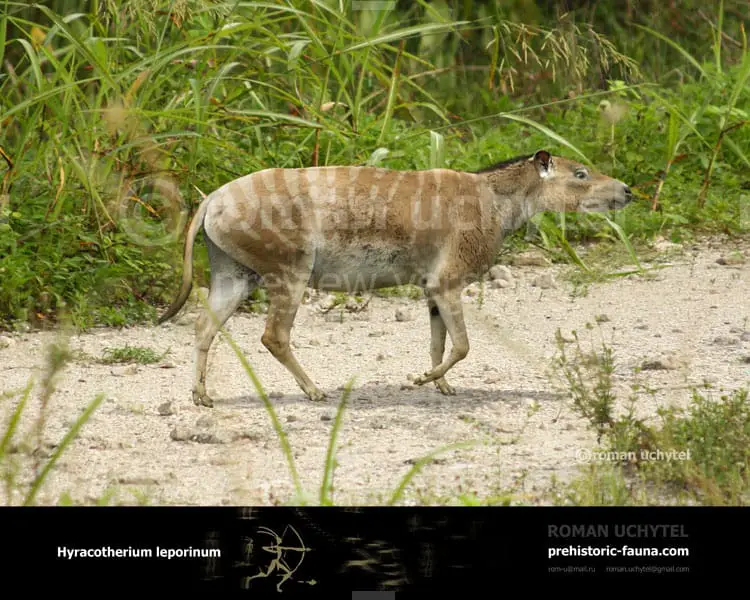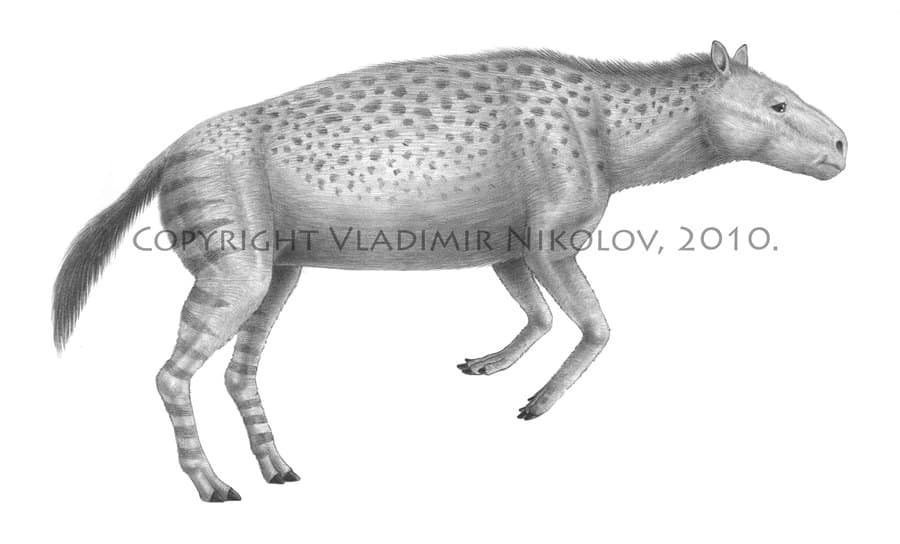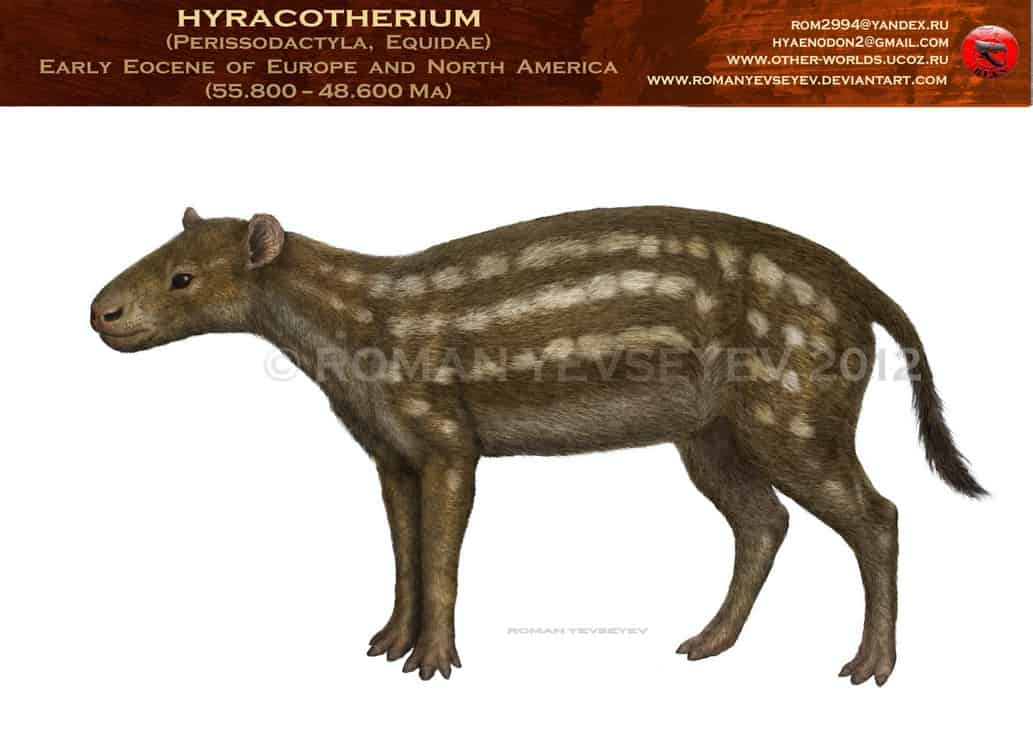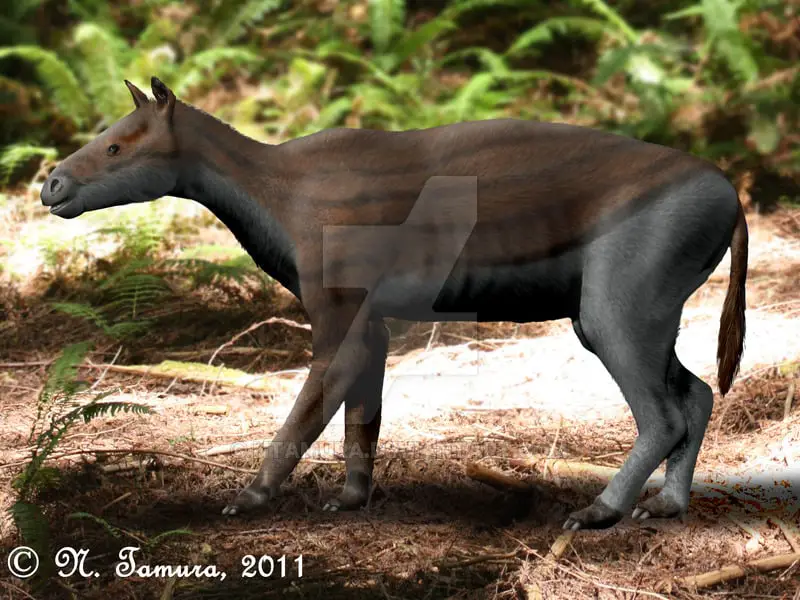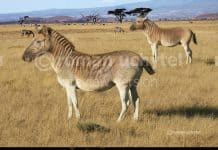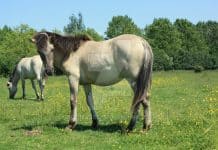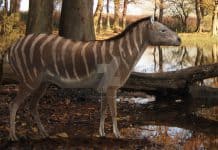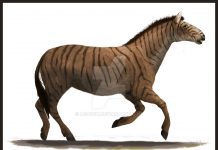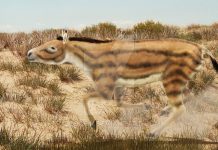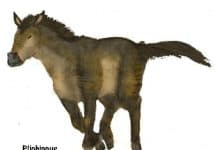Quick Hyracotherium Facts
- Lived from the Early Eocene Period through the Middle Eocene Period
- Lived in what is now North America and Western Europe
- Also known as Eohippus
- Was smaller than a dalmatian
- Could probably have run as fast as a cat
About Hyracotherium
Hyracotherium is an extinct species of a very small horse-like ungulate which lived approximately 55 to 45 million years ago – from the Early Eocene Period through the Middle Eocene Period. It was first discovered during the early 19th century and was given the name Hyracotherium – which means “hyrax-like beast” in Greek – by Richard Owen in 1841. However, a few decades later, the name was changed by Othniel Charles Marsh to Eohippus – which means “dawn horse.” Currently, there is some debate over which name should be used for this species of animal.
One of the most interesting facts about Hyracotherium is that there is quite a bit of confusion over what this prehistoric horse-like animal should be called. For many years, it was called by the name Othniel Charles Marsh gave it, Eohippus, and that name was used in all kinds of different textbooks and encyclopedias. Then it was decided that since the two fossils that had been found were the same specimen, then they should be called by the name given to the original fossils – the ones named by Richard Owen. And the controversy doesn’t end there. Now paleontologists have discovered that while the two specimens found by Mr. Marsh and Mr. Owens were quite similar, they were, in fact, two different specimens. Which means each of the fossils could be each given the original name they received.
However, the controversy extends beyond the proposed naming of this species. There has been some debate over whether this animal should be called the “first horse.” Most paleontologists classify this animal as an odd-toed ungulate (also known as a perissodactyl). This would have made it not only a relative of modern horses but also of Megacerops. It is only known as one of the ancestral relatives of the modern horse and not the first ancestral relative.
Looking at Hyracotherium pictures, you can clearly see an animal which was extremely small as compared to modern horses or even modern humans. They were about 2 feet high, was about 2 feet long and weighed all of 50 pounds.
However, while it was a very small animal, it was likely to have been quite intelligent. That’s because it had a pretty large brain as compared to the size of its body. Which it would have needed to have escaped the predators of the time considering that it wasn’t very big.
